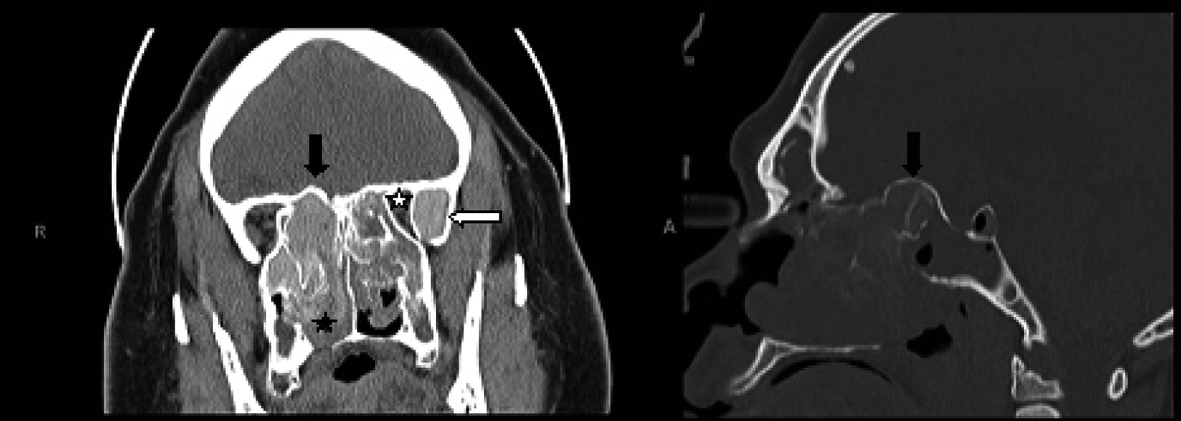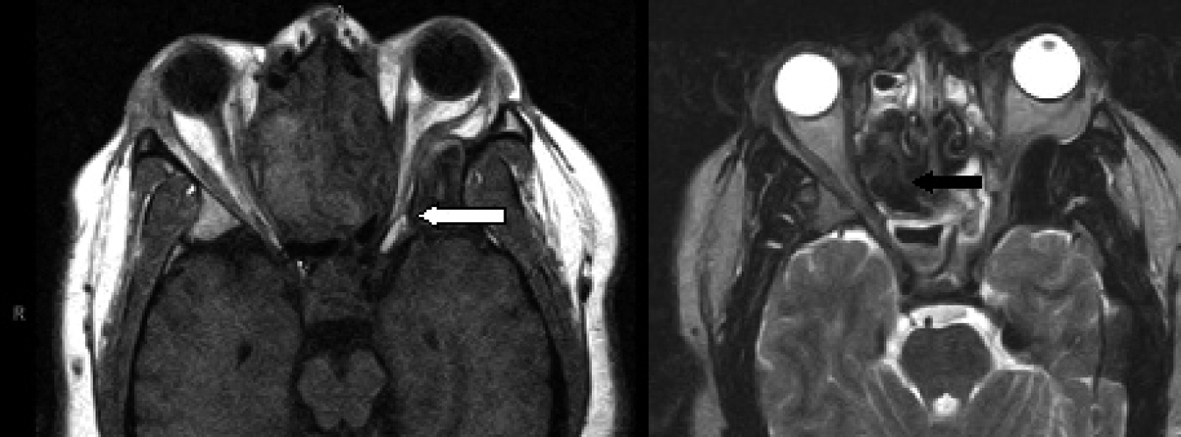
Figure 1. Coronal CT scan of the paranasal sinuses (left image) shows enlarged and opacified left greater wing of sphenoid with high attenuation material (white arrow), along with narrowing of the orbital apex on the left compared to the right side (white star). The fungal hyperattenuation areas also extend intranasally (black star). There is bulging of the roof of the posterior ethmoids into the intracranial space as demonstrated on both the coronal and sagittal CT scans (right image) labeled with black arrows.

